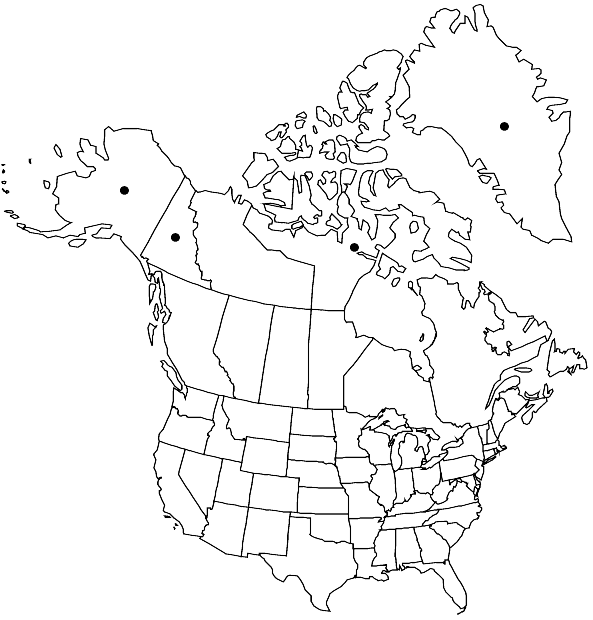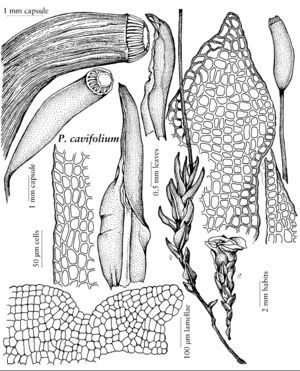Psilopilum cavifolium
Bryologist 19: 70. 1916,.
Stems 6–10 mm. Leaves 2–3 mm, erect-appressed and somewhat wrinkled when dry, spreading when moist, oblong-ovate, concave and distinctly channeled, the apex cucullate, usually minutely apiculate; margins entire or denticulate near apex; costa ending in apex or very shortly excurrent, abaxially smooth or faintly roughened near apex; lamellae 7–10, 6–12 cells high, in profile entire or crenulate with bulging cell walls; cells of leaf base short-rectangular, narrower toward margin; median cells of lamina 15–20(–24) µm wide, thin- to firm-walled, becoming narrower and obliquely rhombic at the margin; perichaetial leaves 2.5–3.5 mm. Seta reddish brown, 8–18 mm. Capsule 3.2–5 mm, pale greenish brown, dark brown to blackish when old, long-cylindric, moderately to strongly curved, only rarely somewhat gibbous; peristome teeth 250–380 µm.
Habitat: Common, especially in lowland and coastal areas throughout arctic North America, on non-calcareous soil and gravel in areas of local disturbance, alluvium, slumping banks of streams and lakes, tussocks, frost boils, late snow patches, rarely submerged in snow melt streams
Elevation: low to moderate elevations (0-1200 m)
Distribution

Greenland, Nunavut, Yukon, Alaska, n Europe, Asia (n Siberia), Atlantic Islands (Iceland).
Discussion
This species typically has entire leaves, lamellae with entire margins, and ± symmetrical, long- cylindric capsules. Psilopilum laevigatum differs in its more slender, wiry appearance, with smaller, erect-incurved, bordered leaves, margins of lamellae incised and dentate in profile, and capsules distinctly asymmetrically ovoid and gibbous. Variety anomalum has leaf margins finely denticulate towards the apex, and less regular, gibbous capsules. Such intermediates may represent hybrids between the two species (D. G. Long 1985). In Nunavut, it is known from Baffin Island, Ellesmere Island, and the Arctic Archipelago.
Selected References
None.
